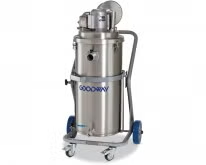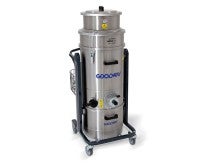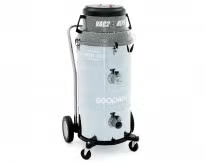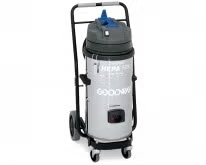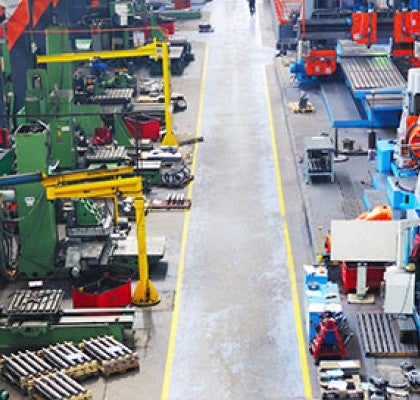Vacuums Safeguard Postal Employees
Facility Maintenance
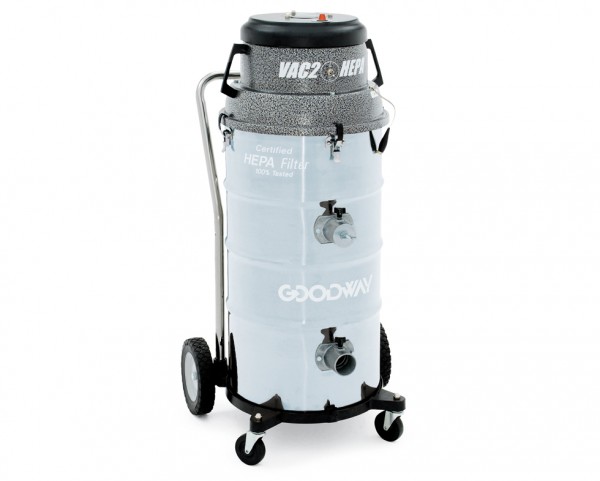
When the first confirmed anthrax case was delivered via mail in October 2001, the United States Postal Service (USPS) quickly focused on employee protection. Gloves, masks, laboratory testing, and antibiotics, as needed, were the first steps.
For a longer-term solution to the problem of mail-borne contaminants, government officials agreed that using HEPA (High-Efficiency Particulate Air) vacuums were needed in postal facilities range from post offices found in cities, towns, and villages, to bulk mailing centers (BMC's) where tons of mail is sorted daily by rapid reading machines for distribution to regional post offices.
Sweeping and air cleaning maintenance procedures have been the traditional ways to handle the accumulations of paper dust, a continuous challenge to postal facilities. Even careful sweeping allows dust to become airborne, and because dust may carry anthrax spores or other biohazard contaminants, the procedure had to change.
Rather than conventional industrial vacuums, HEPA vacuums were chosen because of anthrax spore size, which measures less than 5 microns. By definition, a True HEPA filter removes 99.97% of all particulate matter down to 0.3 microns, a size equal to 1/75,000 of an inch, or about 1/300 the diameter of a human hair.
A call went out to Goodway Technologies Corporation, Stamford, CT, a manufacturer of HEPA, industrial vacuums. Executive Vice President Tim Kane met with USPS officials to review HEPA vacuum protection for postal employees.
Vacuums are rated by two performance factors - static lift and air displacement. Static lift, measured in inches of water or mercury, indicates the amount of energy in the air stream generated by the vacuum available to do the work, such as overcoming obstacles and getting heavier materials in motion. Air displacement, measured in cubic feet per minute (CFM), indicates the amount of air moving through the vacuum, determining the speed of material recovery. A balanced combination of static lift and air displacement makes for the best vacuuming system.
In operation, Goodway HEPA vacuums filter particles to 0.3 microns with a series of filters. First, there is a disposable 10-gallon collection bag that filters particles to 5 microns. Then a disposable filter protector bag and cartridge filter captures particles to 2 microns, and finally the HEPA filter.
The stainless steel tank is lined with a 4 mil poly liner. The filter arrangement allows the postal worker to dispose of the collection bag and filter protector within the confines of the poly drum liner, ensuring safe removal of debris. A HEPA filter monitor light lets the operator know when it is time to replace the filter. The stainless steel vacuum tank rides atop wheels and casters for maneuverability in postal facilities of any configuration.
A variety of accessories provide the best tool for each situation. Special tools protect delicate electronic systems within the sorting equipment. An employee from each Postal facility will receive training in HEPA vacuuming maintenance at central locations.
"Our engineers were able to take some added specifications requested by the Postal Service and engineer them into our HEPA vacuum in only 48 hours," says Kane. "Our reaction time to meeting these specifications is critical, considering the gravity of the current biohazard situation."
Protection from biohazards calls for major procedural changes in postal cleaning and maintenance practices. There are more than 40,000 USPS facilities to be protected. Some are very automated, while many require manual operations to receive, sort, and prepare mail for delivery. These challenges call for various configurations of HEPA vacuums. "Some will look like the ones we're providing right now," says Kane. "Others may be back-pack models, wet-dry or dry-only models, and even rolling HEPA vacuums with front-end pickup for wide swath capabilities. Goodway and other companies involved will be working to provide the HEPA solutions that will help the U. S. Postal Service protect their 800,000 employees now and well into the future."
Every 3 to 6 hours, mail sorting machines in the U. S. Postal Service's bulk mail centers are shut down for cleaning. The conveyors, railings, pockets, and guarding cleaned and the controls, including PC boards and anything else reachable by the fine paper dust.
Reprinted for Goodway Technologies Corporation with permission of Government Product News magazine.

